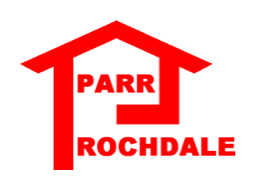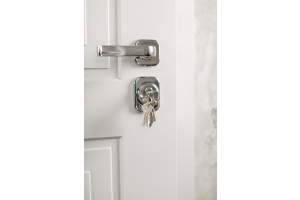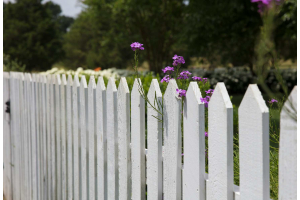
Laying decking is one of the most effective ways to add usable space and style to your garden. It could be for a raised seating area, a dining zone for summer barbecues or a platform to frame a hot tub, decking always looks good, when done right.
In this guide, we’ll cover how to lay decking on soil, grass or concrete, all your typical landscaping bases. But first, the tools and materials you’ll need if you don’t have already;
Tools & Materials You’ll Need
Before you begin, make sure you’re stocked with everything required for the job. You’ll need reliabletools and workwear like a saw, drill, tape measure and spirit level. A builder’s line, spade and tamper will also help with site prep. For safety, don’t forget PPE like gloves and safety glasses.
Materials-wise, you'll need decking boards, subframe timber, decking screws, coach bolts, and either weed control fabric with gravel or concrete pads for your foundation.
How to Lay Decking on Soil or Grass
Choose a level area if possible. Use pegs and string to map out your layout, double checking dimensions with a tape measure. Once marked, clear away any turf, stones or debris and dig down to around 50mm to expose the soil.
Level the surface using a flat board and spirit level, adding or removing soil as needed. At this stage, you can decide whether to lay directly on the ground or build a floating frame.
If laying on the ground, add weed control fabric and then a layer of gravel around 40–50mm deep to help with drainage and reduce weed growth.
If you're building a floating deck, position your concrete pads evenly and build the subframe on top. Make sure to leave a gap of 5–8mm between decking boards along their length and 3mm at the ends to allow for expansion.
Use sturdy exterior-grade timber for your joists and frame. For most standard decks, inner joists should be spaced no more than 450mm apart, less for diagonal layouts.
Secure the outer frame using pilot holes and coach screws, then install inner joists evenly.
Once the subframe is complete, you can begin laying your deck boards, ensuring screws are positioned away from board edges and expansion gaps are consistent throughout.
How to Lay Decking on Concrete
Concrete differs to laying decking on soil or grass. If your concrete/patio is cracked, sunken or uneven, repairs may be needed before building over it. A solid, level slab will give you the best results.
A common method: Use a sleeper system, which involves fixing joists directly to the concrete with concrete screws or fasteners.
A more durable approach: Build an elevated frame using posts and footers that go through the concrete slab. This approach is particularly useful if you need to raise the deck to meet a door threshold or create steps down into a garden.
Like with the soil/grass method, begin by measuring out your frame using a string line. Mark where footings or anchor points will go, and drill through the concrete where needed.
Posts can be set in concrete filled holes or secured using base plates bolted into the slab.
Once the support system is in place, build the frame as you would over soil.
Important: Ensure joist spacing carefully and use flashing tape to protect against moisture damage. This step is especially important on concrete, as water can pool more easily.
After the frame is built, fix the deck boards using hidden fasteners or screws. Trim any overhangs and install a fascia board to neaten the perimeter.
Finishing Touches & Tips
To ensure your new deck stays in great condition, you should treat cut ends with an end grain preserver and applying a weather-resistant finish. A quick sanding of rough edges improves both appearance and safety.
For elevated decks, you may also need to install guardrails to meet building regulations.
If you're not sure how much material to order, take the area’s measurements (length × width in metres), calculate the surface area, and divide by the coverage of your chosen board. Multiply the result by 1.1 to account for wastage.
Got a question? Contact us here and our team will be happy to help.




